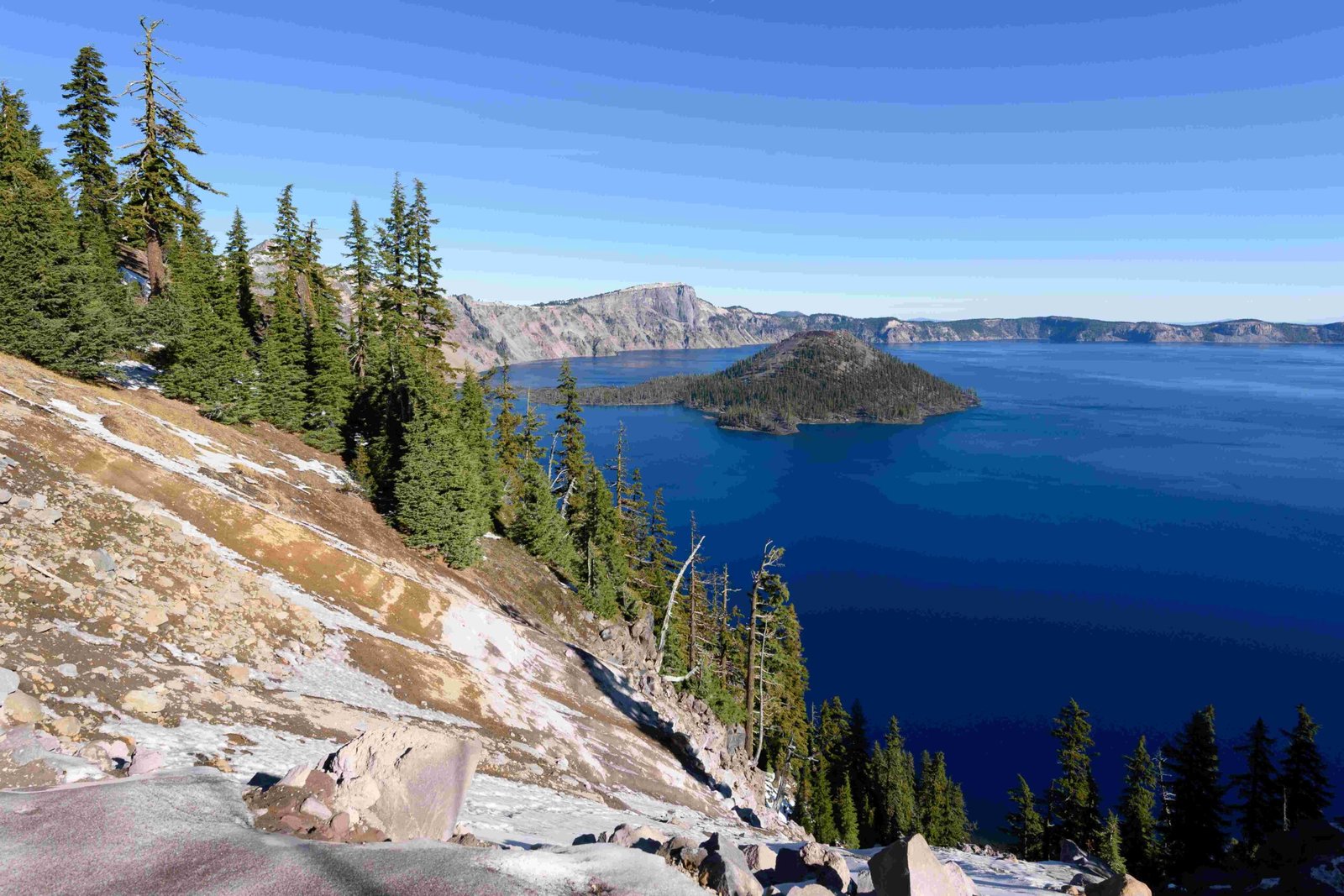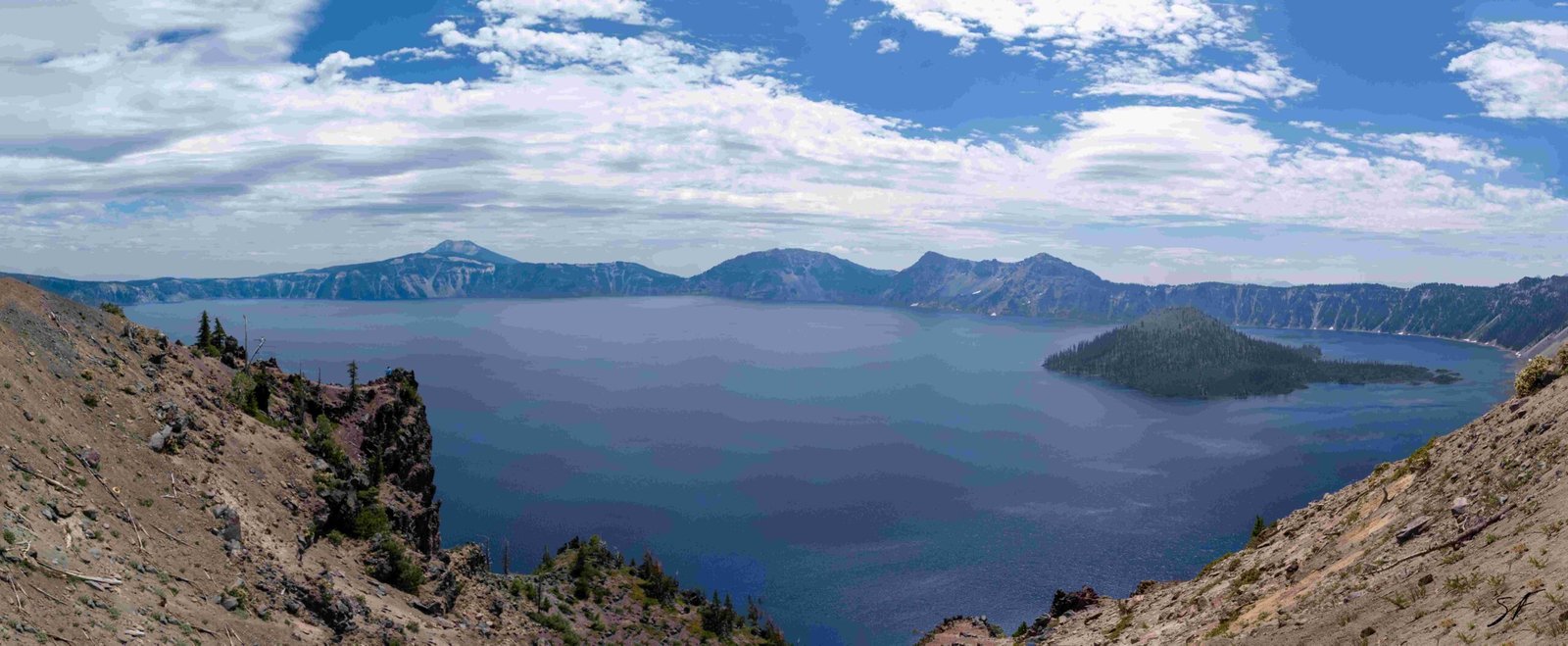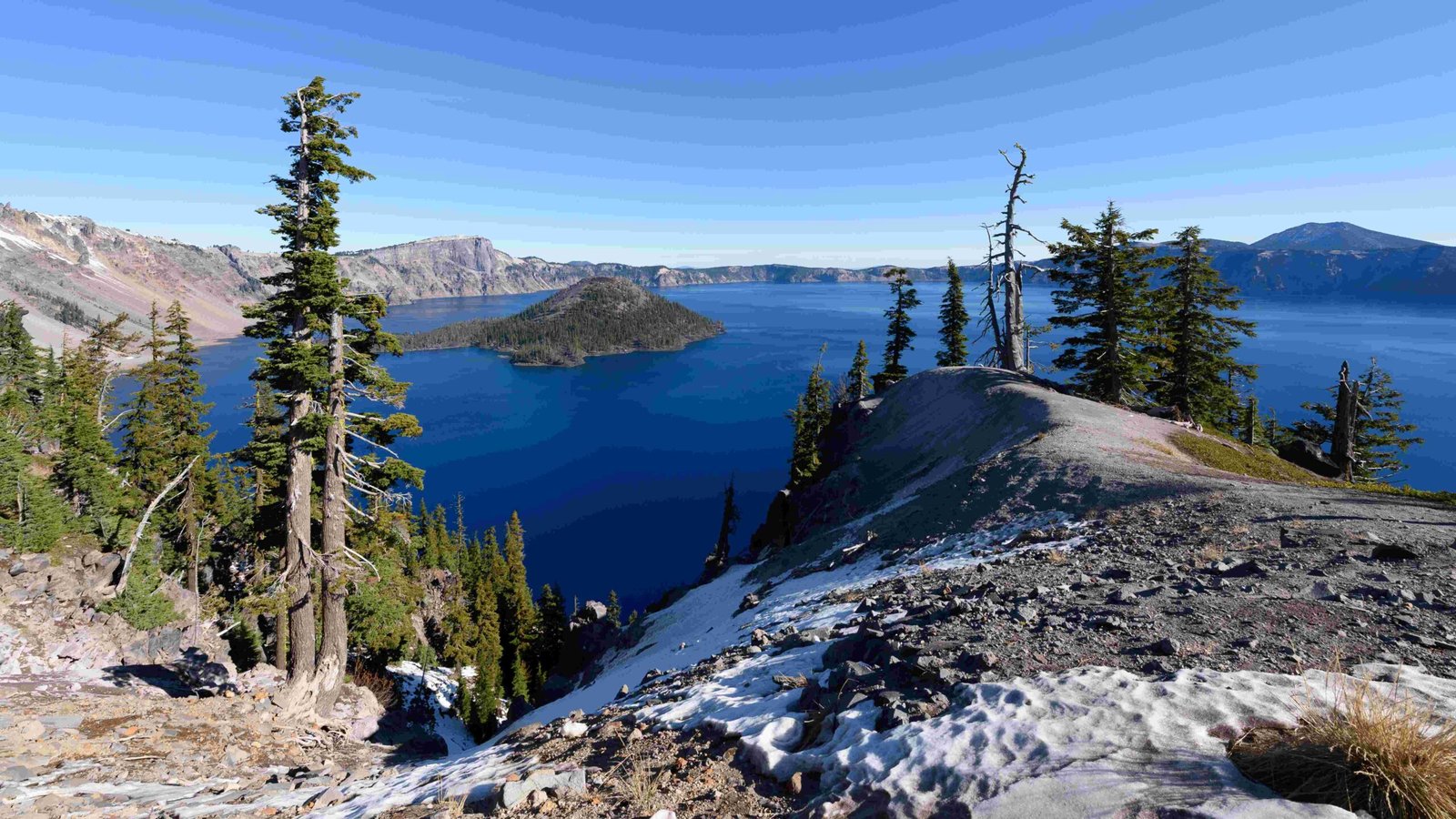Crater Lake in Oregon is a natural wonder, formed by a volcanic eruption and collapse nearly 7,700 years ago. This circular lake, nestled in the Cascade Mountains, boasts a diameter of approximately 6 miles. Its pristine blue waters, surrounded by steep cliffs, make it a unique geological formation and popular tourist destination. The lake’s circular shape and impressive size contribute to its status as one of America’s most beautiful and intriguing natural landmarks.
What Are the Exact Dimensions of Crater Lake?

Crater Lake’s circular shape is one of its most distinctive features. Here are the precise measurements:
- Diameter: Approximately 5 miles by 6 miles (8.0 by 9.7 kilometers)
- Circumference: About 21 miles (33 kilometers)
- Surface Area: 20.6 square miles (53.4 square kilometers)
- Maximum Depth: 1,949 feet (594 meters)
- Average Depth: 1,148 feet (350 meters)
These dimensions make Crater Lake the deepest lake in the United States and the ninth-deepest in the world.
How Was Crater Lake’s Circular Shape Formed?

The circular shape of Crater Lake is a result of its volcanic origin:
- Ancient Volcano: Mount Mazama, a stratovolcano, stood in the place of Crater Lake for hundreds of thousands of years.
- Massive Eruption: About 7,700 years ago, Mount Mazama erupted violently, ejecting a massive amount of material.
- Caldera Collapse: The eruption emptied the magma chamber beneath the volcano, causing the mountain to collapse inward.
- Caldera Formation: This collapse created a circular depression called a caldera.
- Lake Formation: Over time, the caldera filled with water from rain and snowmelt, forming the nearly circular Crater Lake we see today.
What Makes Crater Lake’s Water So Blue?
The intense blue color of Crater Lake is one of its most famous attributes. Several factors contribute to this:
- Water Purity: The lake is filled almost entirely by snowmelt and rain, with no incoming streams or rivers.
- Depth: The lake’s great depth allows it to absorb many of the sun’s color spectrum, reflecting back primarily blue wavelengths.
- Lack of Pollutants: The absence of pollutants or sediment in the water contributes to its clarity and color.
- High Altitude: The lake’s elevation (6,178 feet above sea level) results in less atmospheric interference with sunlight.
What Unique Features Can Be Found Within Crater Lake?
Despite its seemingly simple circular shape, Crater Lake contains several interesting features:
- Wizard Island: A cinder cone that rises 763 feet above the lake’s surface.
- Phantom Ship: A small island resembling a ghost ship, composed of erosion-resistant lava rock.
- Old Man of the Lake: A hemlock log that has been bobbing vertically in the lake for over a century.
- Fumaroles: Underwater hot springs that release heat and minerals into the lake.
- Moss Beds: Unique underwater moss colonies growing as deep as 600 feet below the surface.
How Can Visitors Experience Crater Lake’s Circular Beauty?
Crater Lake National Park offers several ways for visitors to appreciate the lake’s circular shape and stunning beauty:
- Rim Drive: A 33-mile road that circles the lake, offering numerous viewpoints.
- Boat Tours: Seasonal tours that allow visitors to experience the lake from water level.
- Hiking Trails: Several trails provide different perspectives of the lake, including:
- Cleetwood Cove Trail (the only trail to the lake’s shore)
- Garfield Peak Trail
- Watchman Peak Trail
- Crater Lake Lodge: A historic lodge on the rim offering accommodations with lake views.
What Is the Best Time to Visit Crater Lake?
The best time to visit Crater Lake depends on your preferences:
| Season | Pros | Cons |
|---|---|---|
| Summer (July-September) | – All facilities open – Warm temperatures – Clear skies |
– Crowded – Possible wildfires |
| Fall (October-November) | – Fewer crowds – Beautiful fall colors |
– Some facilities closing – Cooler temperatures |
| Winter (December-April) | – Snow-covered landscape – Winter activities available |
– Limited access – Many facilities closed |
| Spring (May-June) | – Wildflowers blooming – Fewer crowds |
– Some snow still present – Not all facilities open yet |
How Does Crater Lake’s Circular Shape Impact Its Ecosystem?
The circular shape of Crater Lake, combined with its depth and isolation, creates a unique ecosystem:
- Isolated Environment: The lake’s circular walls limit outside influences, creating a relatively closed system.
- Limited Species: Few fish species can survive in the lake, leading to a simple but balanced ecosystem.
- Thermal Layers: The lake’s depth and circular shape contribute to distinct thermal layers, affecting water circulation and nutrient distribution.
- Microclimate: The caldera’s circular walls create a microclimate within the lake basin, influencing local weather patterns.
Crater Lake’s circular shape, formed by ancient volcanic activity, continues to fascinate visitors and scientists alike. Its nearly perfect circular form, combined with its depth and pristine waters, make it a unique natural wonder in Oregon and beyond.
References:
1. National Park Service – Crater Lake
2. USGS – Crater Lake Origin
3. Oregon Explorer – Facts about Crater Lake

